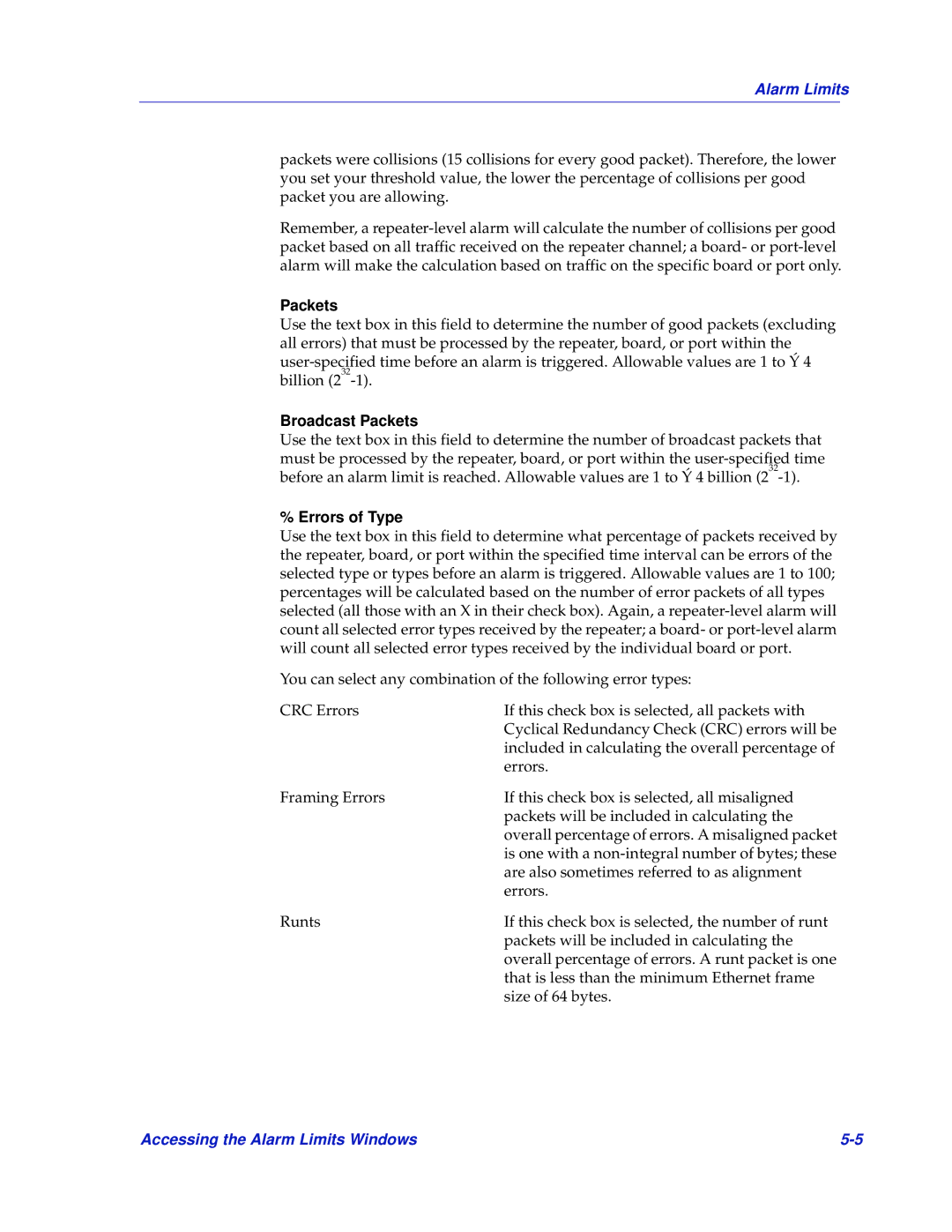Alarm Limits
packets were collisions (15 collisions for every good packet). Therefore, the lower you set your threshold value, the lower the percentage of collisions per good packet you are allowing.
Remember, a
Packets
Use the text box in this field to determine the number of good packets (excluding all errors) that must be processed by the repeater, board, or port within the
Broadcast Packets
Use the text box in this field to determine the number of broadcast packets that must be processed by the repeater, board, or port within the
% Errors of Type
Use the text box in this field to determine what percentage of packets received by the repeater, board, or port within the specified time interval can be errors of the selected type or types before an alarm is triggered. Allowable values are 1 to 100; percentages will be calculated based on the number of error packets of all types selected (all those with an X in their check box). Again, a
You can select any combination of the following error types:
CRC Errors | If this check box is selected, all packets with |
| Cyclical Redundancy Check (CRC) errors will be |
| included in calculating the overall percentage of |
| errors. |
Framing Errors | If this check box is selected, all misaligned |
| packets will be included in calculating the |
| overall percentage of errors. A misaligned packet |
| is one with a |
| are also sometimes referred to as alignment |
| errors. |
Runts | If this check box is selected, the number of runt |
| packets will be included in calculating the |
| overall percentage of errors. A runt packet is one |
| that is less than the minimum Ethernet frame |
| size of 64 bytes. |
Accessing the Alarm Limits Windows |
